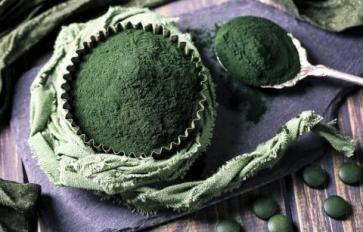
Spirulina and chlorella are gaining momentum, and not just in the nutrition world. From feeding livestock, to becoming biofuel, to fueling astronauts, and potentially combatting climate change, these two types of microalgae are becoming increasingly important in our future.
But there’s a difference between the type of microalgae used as energy and the types that we consume for their health benefits. Here’s the lowdown on how to stay away from potentially contaminated spirulina and how to find the clean chlorella. Keep in mind that these rules are general.
Check the country of origin
One study in 2012 tested various brands of chlorella from 4 different countries–Japan, China, Taiwan, and Korea. Chlorella from China was found to be the most contaminated, while brands from Taiwan were cleanest (lowest levels of aluminum, arsenic, cadmium, and lead.)
2. Organic is important, but not the only indicator
Surprisingly, organically grown chlorella in China had the highest aluminum of all the brands. While purchasing organic spirulina and chlorella is important, the surrounding environment heavily determines what metals may or may not be absorbed. If the chlorella farm is grown next to a chemical plant or airport, the likelihood for contamination is high, even if the algae is technically labeled “organic.”
3. Chemical disasters play a role
Japan’s food quality may seem in line with cleanly sourced chlorella, but chemical disasters can suddenly alter a source’s quality. The Fukushima disaster of 2011 contaminated the entire region, and effects are still seen (and, unfortunately, consumed). Be cautious when buying foreign chlorella, and since most chlorella and spirulina is grown commercially outside of North America, finding clean sources is harder than you might think.
4. Find a clean water source
Ensure your chlorella or spirulina is grown with a pure water source. Similar to how heavy metals may be absorbed, pollution or toxins are easily absorbable through water. Fresh spring water is often preferred, whereas untested sea or surface water can be contaminated.
5. Find a brand
It’s important to find a brand you trust. Ask questions by searching the brand website for FAQ’s or contacting companies directly to find out more about their growing and manufacturing practices. I’ve had great results and feel comfortable with HealthForce, but take command of your personal health to find what works for you.








